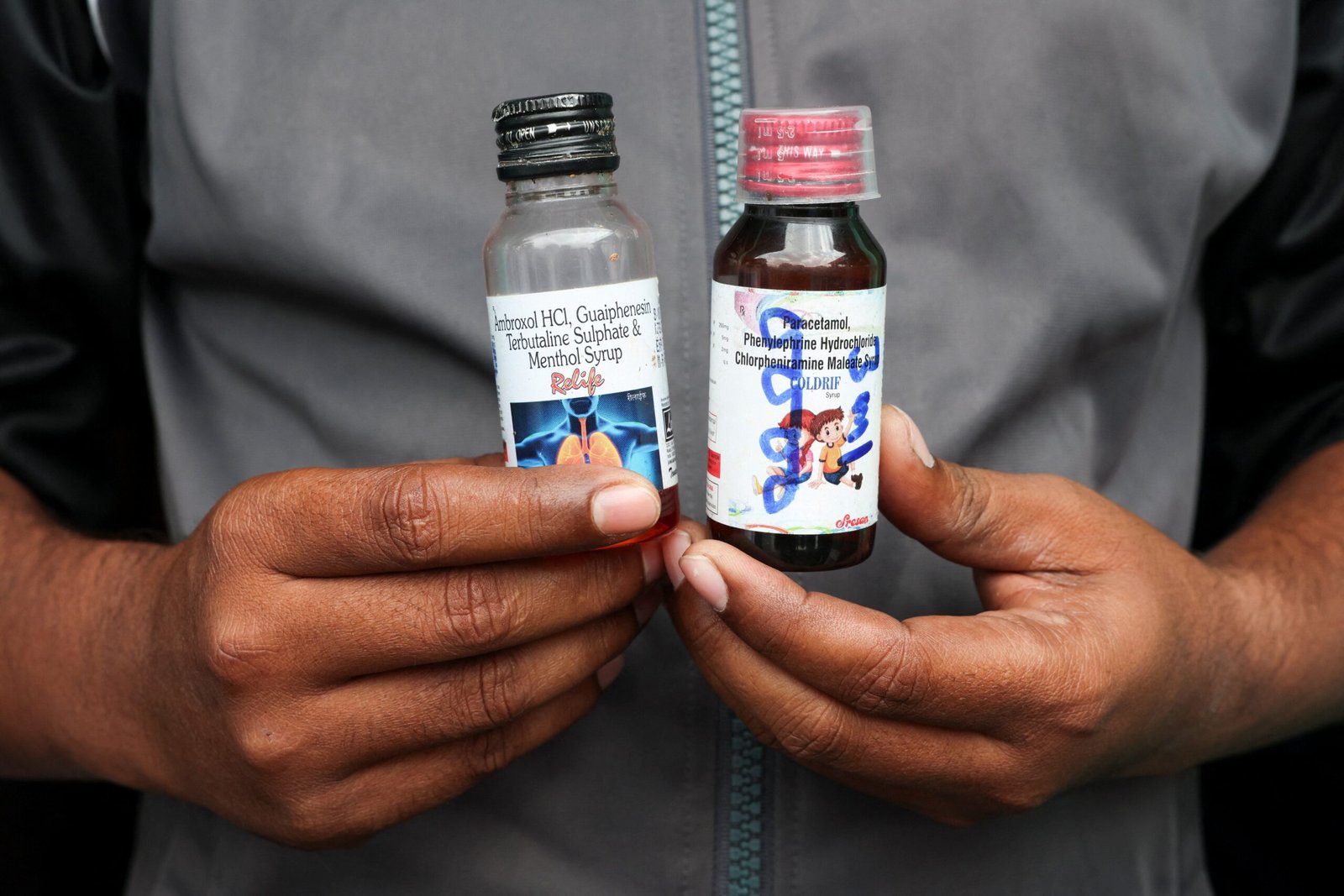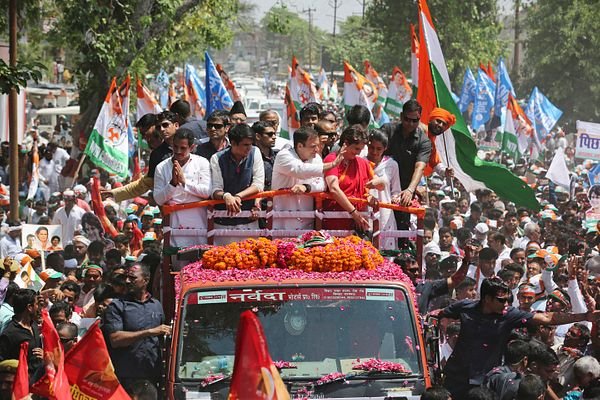Why in the News?
- Twenty-five children have died after receiving a contaminated cough syrup.
- The deaths occurred despite recent regulatory bans on certain paediatric cough formulations, raising questions about enforcement, surveillance and distribution chains.
- The tragedy exposes gaps in pharmacovigilance, paediatric-specific regulation, and India’s role as a major exporter of medicines to the Global South.
Key Highlights
- Incident and immediate facts
- The case of Twenty-five children’s death due to cough syrup gained public attention because of the tiny commission alleged to have been paid per bottle, symbolising systemic failure and moral outrage.
- The incident occurred after the Union Health Ministry had already banned some paediatric cough formulations earlier in April 2025.
- Regulatory architecture and responsibilities
- India’s drug regulatory system has a national body, the Central Drugs Standard Control Organisation (CDSCO), and state drug controllers that supervise manufacture, sale and distribution.
- CDSCO handles large manufacturers and export approvals, while state agencies oversee local manufacturers and market surveillance.
- Why children need special pharmacological attention
- Children’s bodies work differently from adults. Their organs, metabolism, and body weight are not the same, so medicines affect them in different ways.
- Most clinical trials are done on adults. Because of ethical reasons, very few medicines are properly tested on children. This means there is often very little data about how safe or effective a drug is for them.
- Doctors sometimes use adult medicines for children by reducing the dose, this is called off-label use. But this can be dangerous, as the correct dosage and side effects for children are not always known.
- Global context and India’s pharmaceutical role
- WHO has warned about contaminated cough syrups and linked some deaths abroad to medicines manufactured in India.
- India is a leading supplier of generic and paediatric medicines to the Global South, which increases both its responsibility and the reputational risk.
- International frameworks (e.g., EU paediatric authorisation; US BCPA) offer models that combine regulation with incentives for paediatric drug research.
Key Terms
- Essential Medicines List for Children (EMLc)
- An EMLc identifies medications that satisfy priority health needs for children and should be consistently available.
- It guides public procurement, formulary design, and clinical practice in paediatric care.
- Regular updating of the EMLc ensures inclusion of evidence-based, age-appropriate formulations and strengths.
- A national EMLc must reflect local disease burden, genetics, nutrition and health-system capacity.
- Subsidising EMLc drugs improves access and reduces catastrophic health expenditures for poor families.
- Integrating EMLc with insurance and public supply chains enhances equitable paediatric care.
- Supply-chain traceability and recalls
- Traceability enables regulators to follow a drug from manufacturer to patient, facilitating rapid recalls when necessary.
- A robust digital traceability system includes batch tracking, barcoding and real-time reporting at distribution points.
- Effective recall mechanisms require legal authority, rapid communication channels and logistical preparedness to retrieve products.
- Traceability improves market surveillance, deters counterfeit products and supports post-market safety analyses.
- Integrating traceability with pharmacovigilance and customs reporting protects both domestic and export markets.
- Article 39(f)
- Article 39(f) of the Indian Constitution directs the state to protect children from exploitation and to provide opportunities for healthy development.
- This Directive Principle underpins policies on education, nutrition, health and child protection.
- While not directly enforceable like Fundamental Rights, Article 39(f) informs legislation and executive priorities.
- Regulatory failures that harm children raise constitutional as well as administrative accountability questions.
- Aligning drug-safety reforms with Article 39(f) strengthens the legal rationale for urgent policy action.
Implications
- Public health risk: Inadequate paediatric drug safety endangers millions of children and undermines trust in health services.
- Regulatory credibility: Failure to prevent distribution of banned formulations weakens the credibility of CDSCO and state drug authorities.
- International ramifications: Contaminated exports risk diplomatic fallout and can harm India’s standing as the “pharmacy of the Global South.”
- Legal and ethical duty: The state’s constitutional responsibility (Article 39(f)) to protect children demands urgent policy and legal action.
- Policy prioritisation: The crisis highlights the need for paediatric-specific legislation, stronger pharmacovigilance and routine national data collection.
Challenges and Way Forward
| Challenge | Way Forward |
| Weak paediatric-specific regulation | Frame paediatric medicine legislation and guidelines, modelled on EU/US frameworks, with incentives for child-specific trials. |
| Inadequate pharmacovigilance and data | Establish a national paediatric pharmacovigilance network with mandatory adverse-event reporting, linked to hospitals and pharmacies. |
| Poor enforcement of bans and recalls | Strengthen enforcement capacity of CDSCO and state drug controllers, institute rapid recall protocols and real-time supply-chain tracking. |
| Use of adult formulations for children (off-label use) | Issue strict labeling and dispensing rules, ban certain OTC paediatric formulations, and promote approved child formulations. |
| Insufficient essential medicines list for children (EMLc) | Regularly update and publicise an EMLc, ensure procurement for public facilities, and subsidise essential paediatric drugs. |
| Clinical trial gap for children | Create ethical, age-appropriate paediatric trial frameworks and incentives (grants, exclusivity) to generate India-specific safety data. |
| Public awareness and dispensing practices | Run nationwide caregiver and pharmacist training; mandate child-safe packaging, dosage charts and language-appropriate labeling. |
Conclusion
The tragic deaths linked to contaminated cough syrup expose systemic weaknesses in paediatric drug safety in India. Protecting children requires paediatric-specific legislation, a robust pharmacovigilance network, enforceable supply-chain controls, regular updating of the Essential Medicine List for Children, and India-generated clinical data. Only a coordinated legal, regulatory and public-health response will restore trust and prevent future tragedies.
| EnsureIAS Mains Question Q. Analyse the gaps in India’s regulatory framework for paediatric medicines in the wake of recent deaths linked to contaminated cough syrup. Suggest comprehensive reforms to strengthen child-specific drug safety. (250 words) |
| EnsureIAS Prelims Question Q. Consider the following statements: 1. India currently has a dedicated, regularly updated national Essential Medicines List for Children (EMLc) that directly guides public procurement. 2. The pharmacokinetic and pharmacodynamic responses in children are substantially different from adults, necessitating child-specific clinical data. Which of the following statements are correct? Answer: b) 2 only Explanation: Statement 1 is incorrect: India does not yet have a robust, regularly updated national EMLc that is widely implemented; the WHO’s EMLc exists as an international reference, but India needs a dedicated, routinely updated national list and procurement policy for children’s essential medicines. Statement 2 is correct: Children have different pharmacokinetics (how the body processes a drug) and pharmacodynamics (how the drug affects the body), due to varying metabolism, organ maturity and body composition. Therefore, adult trial data cannot be safely extrapolated to children; child-specific clinical data are essential to determine safe dosing and formulations. |
Also Read | |
| UPSC Foundation Course | UPSC Daily Current Affairs |
| UPSC Monthly Magazine | CSAT Foundation Course |
| Free MCQs for UPSC Prelims | UPSC Test Series |
| Best IAS Coaching in Delhi | Our Booklist |




